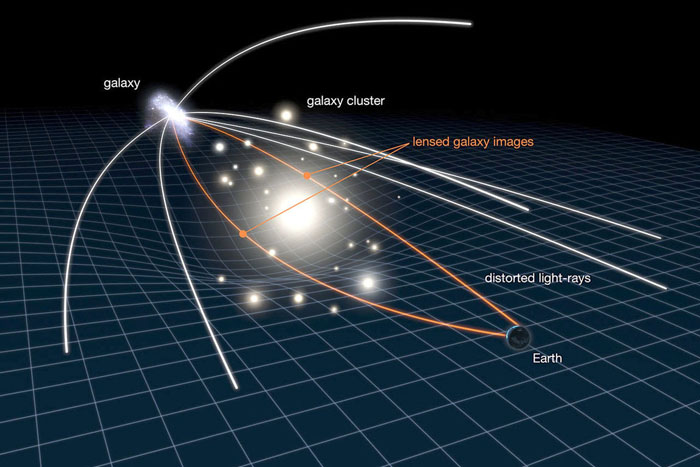Solar Eclipse Science Helps Prove Einstein's Relativity Theory in Nat Geo's 'Genius'
While the U.S. prepares for the Great American Total Solar Eclipse coming on Aug. 21, National Geographic's "Genius" recounts how a solar eclipse helped to prove Albert Einstein's theory of general relativity.
The latest installment of the new global event series airs tonight (May 30) at 9 p.m. EDT on the National Geographic Channel. In this episode, Einstein seeks funding for an expedition to see a total solar eclipse, because he believes that by observing stars near the sun, he can prove that gravity bends light.
Einstein's idea stemmed from some seemingly weird observations of the planet Mercury dating back to the 1840s. Astronomers had long before noticed something weird happening whenever Mercury reached perihelion, or the point in the planet's orbit that is closest to the sun. Planetary orbits are shaped like ovals rather than circles, and while these oval-shaped orbits normally move over time, Mercury's orbit was shifting much faster than Newtonian physics could explain. [Photos: The 'Genius' of Albert Einstein on Nat Geo]
At first, scientists thought that an undiscovered planet which they named Vulcan was tugging at Mercury, but Einstein proved otherwise using his theory of general relativity. Though it appeared that Mercury's orbit wasn't conforming to Newton's laws, the discrepancy could be accounted for by including relativity in the calculations, Einstein postulated.
Einstein's explanation relied on the idea of the space-time continuum, in which three-dimensional space and time are one four-dimensional entity. Because the gravity of the sun bends the fabric of space-time in the vicinity of the star, Mercury's orbit shifts slightly. Gravity, Einstein suggested, is a manifestation of the curvature of space-time.
The same concept would produce a visible effect with starlight passing by the sun, Einstein suspected. And the only way to prove that was by watching a total solar eclipse, when the sun's bright rays are blocked by the moon, allowing astronomers to see what's around the sun.
You can see this for yourself at home, even without an eclipse. All you need is a piece of paper, a source of light (such as a window) and a sharp utensil such as a freshly sharpened pencil. Cut a large hole at the center of the paper, approximately the size of a half-dollar coin, then prick tiny holes around it. If you hold the paper up to the light, you probably won't be able to see the small holes very well. Now do the same thing, but block the larger hole as you hold the paper up to the light. With no light coming from the "sun" at the center of the paper, it's much easier to see the little "stars" that surround it.
Get the Space.com Newsletter
Breaking space news, the latest updates on rocket launches, skywatching events and more!
To see the effects of gravitational lensing, or the warping of light around the sun, you'll need more than a piece of paper, though. But if you look at the stars around the sun during a total solar eclipse with a telescope, you may notice that the stars appear a little warped. They may appear to be in the wrong location, or just a little deformed.

Einstein hoped to see the real deal during the total solar eclipse over Russia on Aug. 21, 1914. Unfortunately, the start of World War I killed those plans, as Germany had declared war on Russia. It wasn't until the total solar eclipse of 1919 that Einstein's prediction about bending starlight was confirmed. You can watch it all unfold Tuesday night on the National Geographic Channel.
Oh, and definitely go see this year's total solar eclipse if you can. For most people, it's a once-in-a-lifetime sight that they won't want to miss!
Email Hanneke Weitering at hweitering@space.com or follow her @hannekescience. Follow us @Spacedotcom, Facebook and Google+. Original article on Space.com.
Join our Space Forums to keep talking space on the latest missions, night sky and more! And if you have a news tip, correction or comment, let us know at: community@space.com.

Hanneke Weitering is a multimedia journalist in the Pacific Northwest reporting on the future of aviation at FutureFlight.aero and Aviation International News and was previously the Editor for Spaceflight and Astronomy news here at Space.com. As an editor with over 10 years of experience in science journalism she has previously written for Scholastic Classroom Magazines, MedPage Today and The Joint Institute for Computational Sciences at Oak Ridge National Laboratory. After studying physics at the University of Tennessee in her hometown of Knoxville, she earned her graduate degree in Science, Health and Environmental Reporting (SHERP) from New York University. Hanneke joined the Space.com team in 2016 as a staff writer and producer, covering topics including spaceflight and astronomy. She currently lives in Seattle, home of the Space Needle, with her cat and two snakes. In her spare time, Hanneke enjoys exploring the Rocky Mountains, basking in nature and looking for dark skies to gaze at the cosmos.









